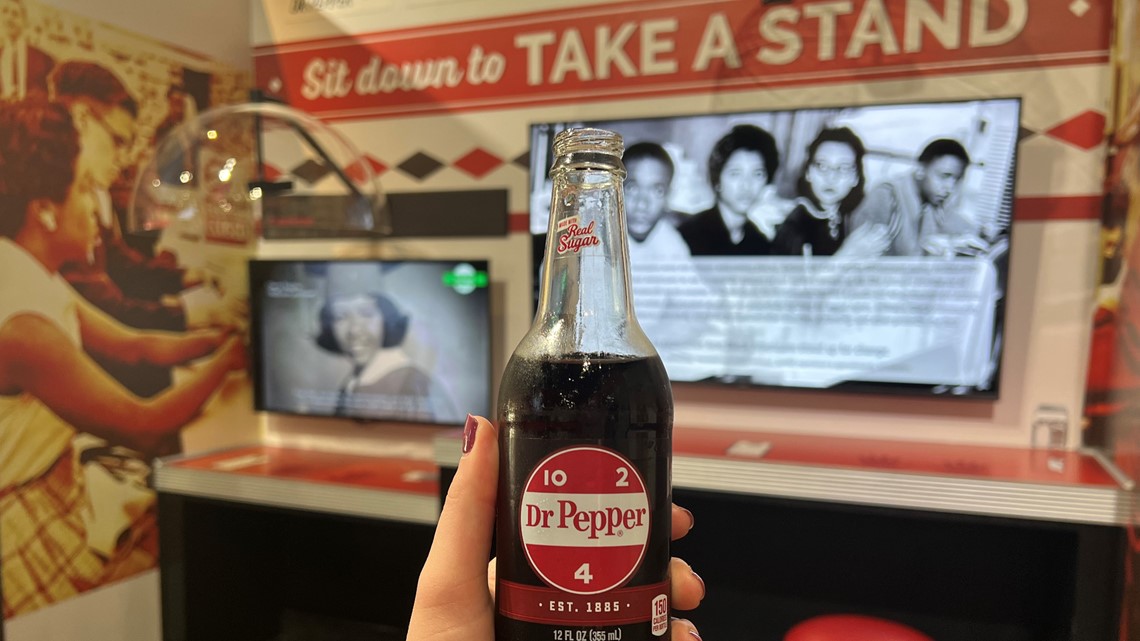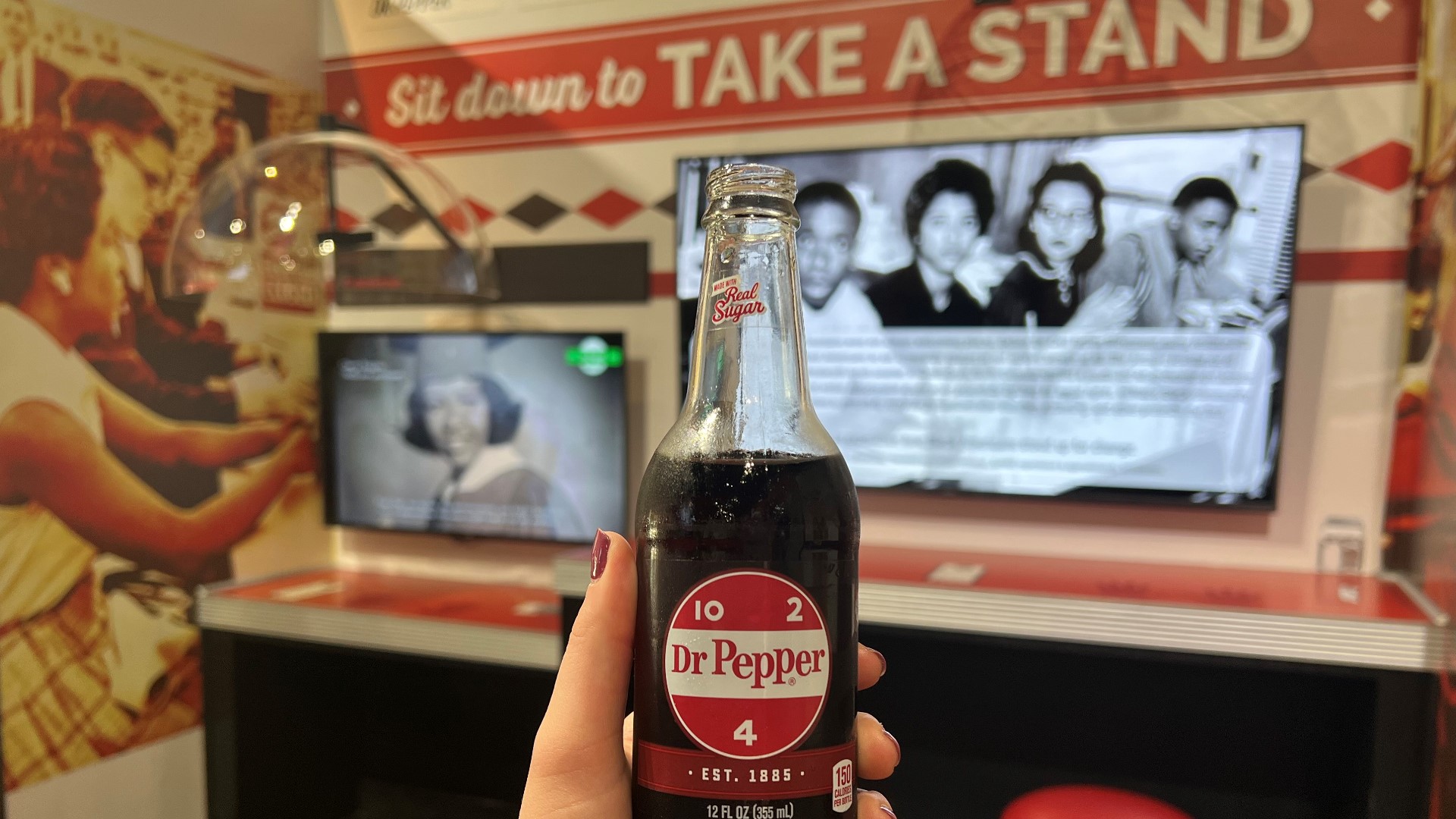WACO, Texas — The Dr. Pepper Museum in Waco is rich in history, showcasing the Texas-made soda in different ways -- from its roots to what the drink has become today. Waco natives describe it as a beacon to the city.
When you visit the museum, you'll see nostalgic signs and an array of exhibits on display. They each tell different stories and perspectives, and gives visitors a taste of history. What you might not know is the museum's staff and board of directors have ensured that every chapter of history is told correctly, even the ones that might be harder to discuss.
One of those topics includes segregation in the country and the Civil Rights Movement that got a kickstart at cafes, soda fountains and lunch counters.
"For most of us, we go through school and we learn about the Civil Rights Movement, but it's really a surface look," said Joy Summar-Smith, associate director for the Dr. Pepper Museum. "We don't dive into the people's stories of the people who lived those experiences, the ones that sat at the lunch counter."
Summar-Smith has spearheaded a year-round exhibit called Sit Down to Take a Stand to help educate people about an important part to American history, but also Waco history. It's in the corner of the Soda Fountain, a free portion of the museum, where people can sit down for a history lesson about the Civil Rights movement at no cost.
"I'm hoping that they take the moment to pause and listen to the stories and really learn about the significance of this happening," Summar-Smith added. "That there were people, prior to the Civil Rights Movement, that didn't have the power, the ability to sit with everybody else coming into a restaurant."
The exhibit is a replica 1960s lunch counter and is designed to explain what sit-in movements were during the fight for civil rights. It contains interviews from Waco residents who had to live through segregation and fight for social change, some that participated in the sit-in movement in Waco.
Story continues below.


To get the oral history presentation to start, all it takes is a touch of a hand on the lunch counter and then you are immersed in history.
"The message is about equality. and we want people to learn from what happened previously, so that as we move forward we can keep that in mind and don't repeat those same mistakes," Summar-Smith explained. "Then, that there's people out there that are willing to talk about these difficult subjects."
Those who participated in the sit-in movement, they were demonstrating. They were peacefully protesting, which disrupted business, causing lunch counters to lose money. During the demonstrations, it wasn't uncommon for protesters to endure verbal and physical abuse.
However, the community involvement that came from these sit-ins become so overwhelmingly strong, it started to get the backing it needed to take the first steps for legal integration laws culminating in the Civil Rights Act of 1964, according to the Dr. Pepper Museum.
Anthony Betters, Sr. proudly sits on the Dr. Pepper Museum's Board of Directors where he was the first Black board officer and then eventually became the first Black board chair. For him, the Sit Down to Take a Stand exhibit is for all those who stood in the gaps before him.
"My mother used to work downtown Austin Avenue and she shared with me how difficult it was during that period of time," Betters shared. "How Black people cannot eat at a lunch counter similar to what I'm sitting at now. She said most Black people couldn't sit at the lunch counter. So, that history is not only a nationwide problem we had on civil rights, but also right here in our city. Sitting here is kind of like we're turning the corner or at least trying to turn the corner."
Betters worked alongside Summer-Smith to ensure the museum reflected history right, and it also reflected the diverse community that visits year-round.
"We live in a very diverse world and our city is very diverse," Betters said. "We have families that are diverse. We must face those challenges head on, and in doing so we need to make sure the museum represents that very thing. Just looking at this exhibit and seeing the pictures, it kind of takes you back to that era, and also is a reflection of the museum itself is trying to bring along peace and harmony but tell the true history along the way."
The difference makers found desegregation in Waco eventually and it was all to share the taste of equality. If you visit the Dr. Pepper Museum, that's the history lesson you could get a taste of, too.

